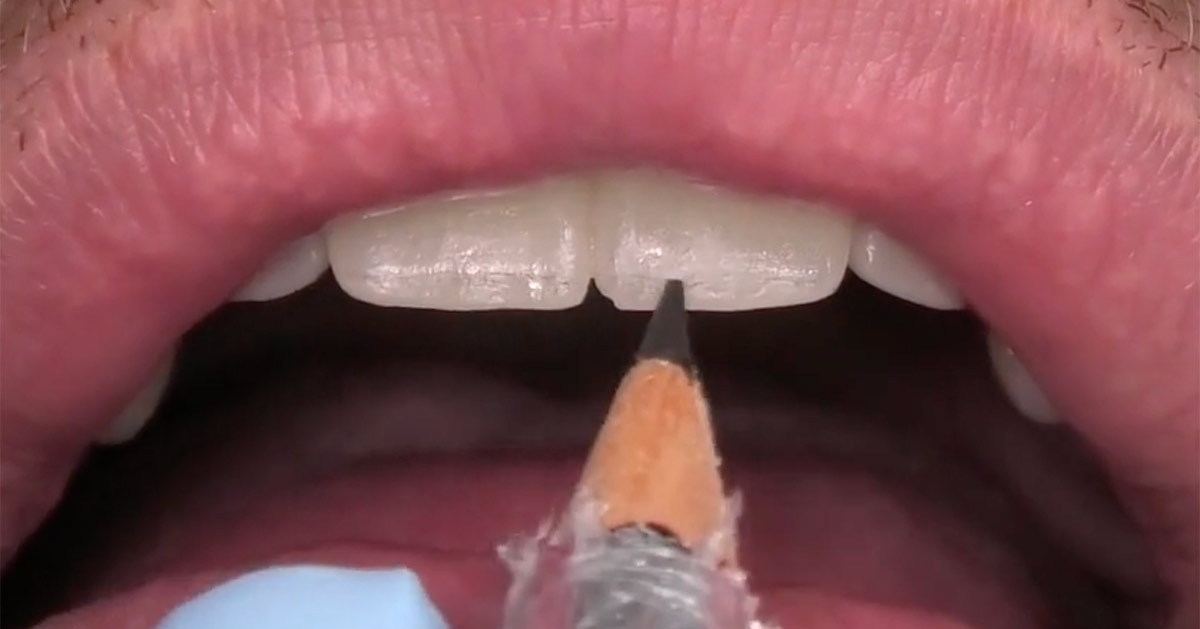How do you help patients who have poor prognosis due to Xerostomia?
It’s a great question because maybe you’re thinking I have a magical answer, but I don’t.
In fact, the first case I had of a patient that had Xerostomia was a full mouth rehabilitation and halfway through she complained that the temporaries were rough, and they were uncomfortable in her mouth and it was difficult to swallow, she was having difficulty chewing and I was quite nervous because it was one of my first rehabs that I’d ever done. Halfway through her treatment she started also saying that her eyes were getting dry and she had Sjogren’s syndrome so the symptoms of Sjogren’s syndrome started coming on in the middle of a Full Mouth Rehabilitation. Since then, we’ve managed to maintain the rehab for over 10 years.
It can catch you out, that’s the first thing.
The second thing is, there’s no easy answer. If you take out the teeth and do a denture, there will be no saliva, so you can’t get suction. It’ll be uncomfortable because there’s no lubrication. It will cause irritation of tissues because of the lack of saliva there’s higher acidity which means they can get fungal infections and so on.
The key thing is that it is difficult, it’s very difficult
If you have teeth, you want to maintain teeth if at all possible because anything you replace teeth with will be more difficult. When we look at all the spectrum of problems you can have with teeth, you are going to have some patients where, because they’ve mostly had problems with caries or erosion or demineralisation due to the Xerostomia, then they may be appropriate patients for implants. Sometimes you have patients that have problems with caries or erosion or loss of tooth structure but there’s no problem with their gingiva at all despite the Xerostomia.
Be careful though, because no dentistry feels as good in a dry mouth as teeth do, so everything you do is going to be more uncomfortable. One of the key parts is to explain to the patient that you are just a dentist, not a God and so you can’t make their mouth as comfortable as it was. There are oral lubricants you can use to make the mouth more comfortable or a spray bottle of water (although water is not like saliva; saliva has a lot of proteins that give it that kind of slippery, lubricating texture whereas water doesn’t do that so well).
Obviously if the patient does have teeth, you can use things like fluoride and you can use your caries-free kit- I really like the caries-free kit- because it has fluoride and alkaline mouth washes to bring the pH up, it has antiseptic mouthwashes that aren’t chlorhexidine based and ones that are chlorhexidine based, basically it has everything you could do to prevent tooth decay in one single kit.
If you do a lot of restorative work, like crown and bridge work, it could fail so do that very cautiously and make sure the patient can afford it. I have done that sort of work, but it has been done on the proviso that the patient can afford for it to fail and they can afford to have it replaced. A big part of this treatment planning is ‘Can the patient afford for whatever you are doing to fail due to tooth structure loss, caries or things related to Xerostomia?’
So, if I was to boil it down to 3 or 4 main things:
- Promise that it is going to be difficult and if you keep the teeth they’ll probably fail eventually.
- Promise that all ways of replacing teeth are going to be difficult because it’ll be uncomfortable.
- Use whatever lubricants or things you can to make the mouth healthier, more comfortable and use a caries kit or whatever you can to keep the teeth (if you can).
If you feel uncomfortable with it, you can refer them off to someone with authority.






